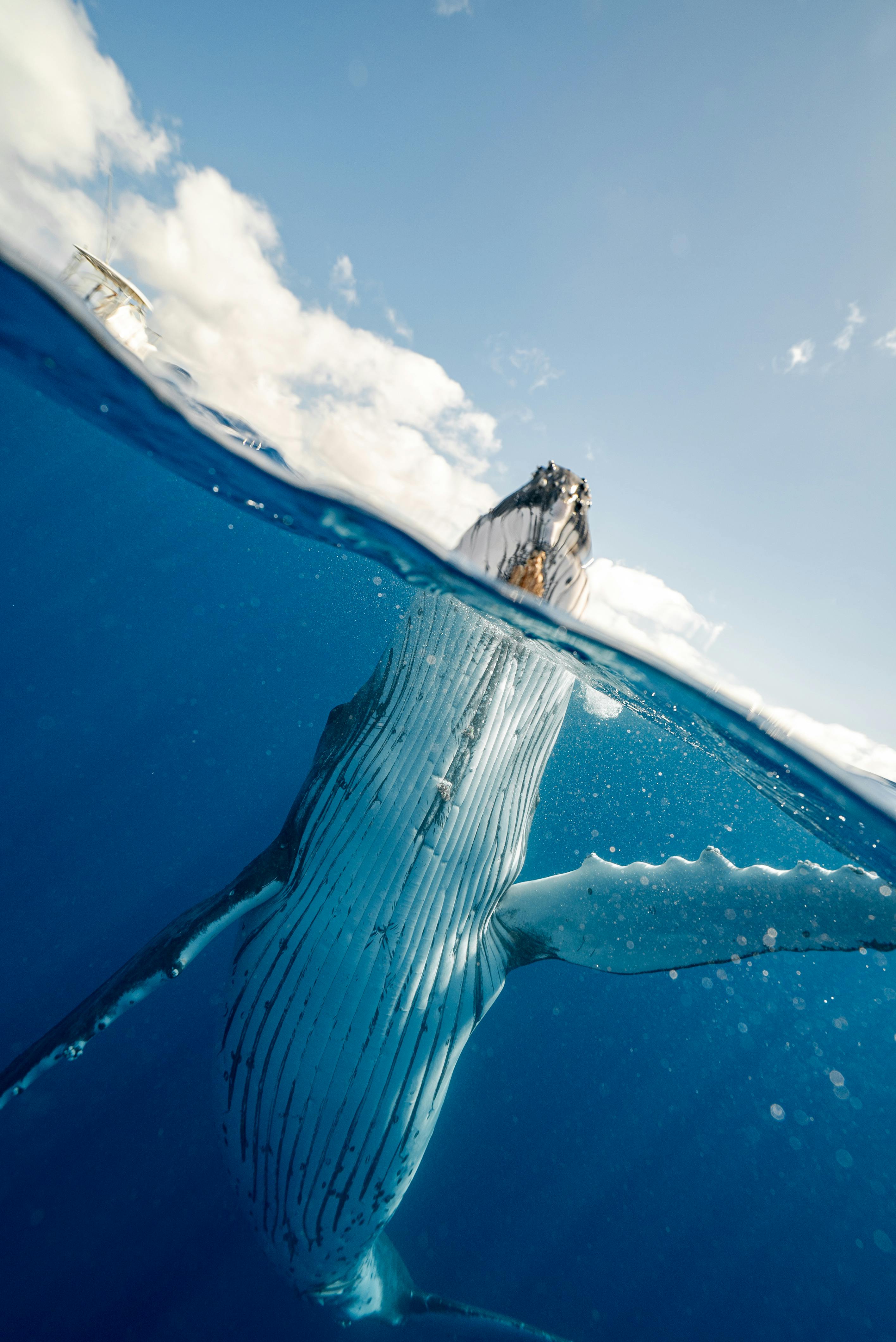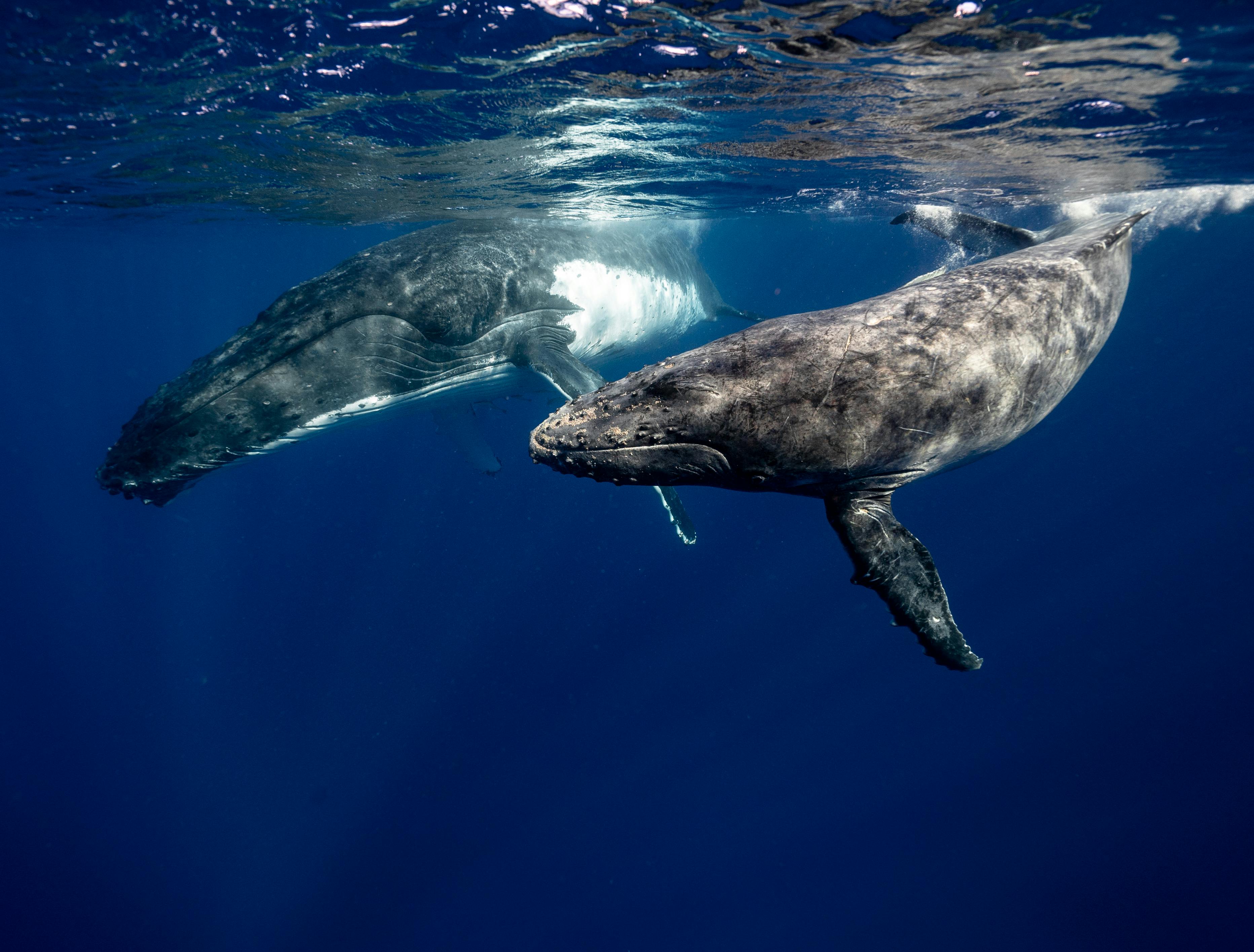Whales
Aquatic honkin' big bois

"Hey guuuuurl blublubub!"
Intro
The study of whales is called cetology, and the whale family has two branches, the extant branches of which consist of the toothed whales and the baleen whales. Most of the whales you'll probably be familiar with are toothed, like orcas and sperm whales, while the baleen whales are filter feeders like humpback whales. The toothed clade also includes the beaked whales, which we still know very little about because they stick more closely to deep sea habitats,so we rarely spot them and when a carcass washes ashore it is usually already badly decomposed. For this reason, this page is stickin' with what we know, and that's your toothy non-beaked whales and baleen feeders.
That unknowabilty is one of the main reasons humans have been drawn to whales: we loooooove to categorize and analyze and catalog and understand, but what we love even more is something that resists our attempts to do any of that to it. Humans don't like to be held back by our terrestrial origins, but for most of our history our knowledge of the sea has been limited to the layers closest to the surface, or to any sea-dwelling elements that don't survive the watery realms, and either float up to us or are pulled up by us. Until about the 19th century, we mostly could only catch a fairly brief glimpse of live whales, and most of our knowledge came from whalers, who had to learn their behaviors and anatomy in order to hunt them. Your boy Ishmael never had a SCUBA suit, SONAR, underwater cameras or microphones, or submersibles, so until those technologies came about in the latter half of the 20th century, all we had were tantalizing hints and limited peeks at surfacing whales or washed-up corpses to study. The imagination loves nothing more than to be teased, and whales have been romanticized and synonymous with mystery for most of humanity's attempts at science.
They also straddle two worlds: the depths of the sea and the surface of the water. Humans spent millenia puzzling whether to classify them as fish or something else long before we had even close to modern definitions of what a mammal is, and that ambidexterity has long led to imaginings of whales being able to traverse the world we terrestrial bipeds know and those we don't. This is a note to myself to briefly allude to mythology and world religions and then link to that section farther down the page for more explication. These pages span both some of what we know about whales as well as some exploration of the more abstract significances our nebulous understandings of these sea beasts have lent to them. I hope you'll see that in the case of these giants of the deep and their co-existence with us, both elements are vital to our understanding of them.
They are heckin' chonkers
- Size comparisons with images
- Reasons why they are so big
- Evolutionary history
Social structures and culture
- Yes they have these
- Define what those mean
- Examples via whale "speech": accents and songs
- Other examples (hunting techniques, ect.)
- Don't forget how they have memes...and add in recent developments in whale "throwback culture"!
Cetacean-Homo sapiens relations
Expanded but still brief history of human attempts to understand whales.
Whaling and its effects on whale populations: both in numbers and behavioral changes.
Human concerns for whalebeing and conservation
I am calling it that and no one can stop me.
Save the Whales and Greenpeace
The guy who made albums of whale songs
Going overboard: the twin cases of Keiko and Blackfish
Behaviors in adapting to humans
Whales smashing yachts!!1a1!A!
Whale songs!

"I don't know, I know it helps reach a broader audience,
but I'm just not super-huge on The Cure."